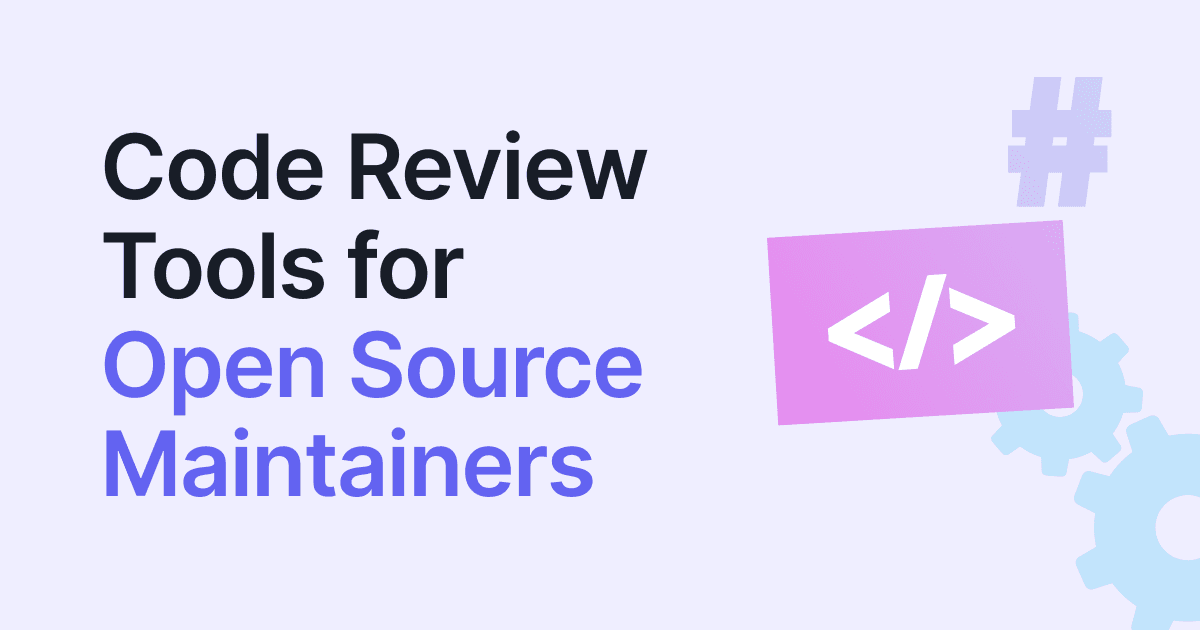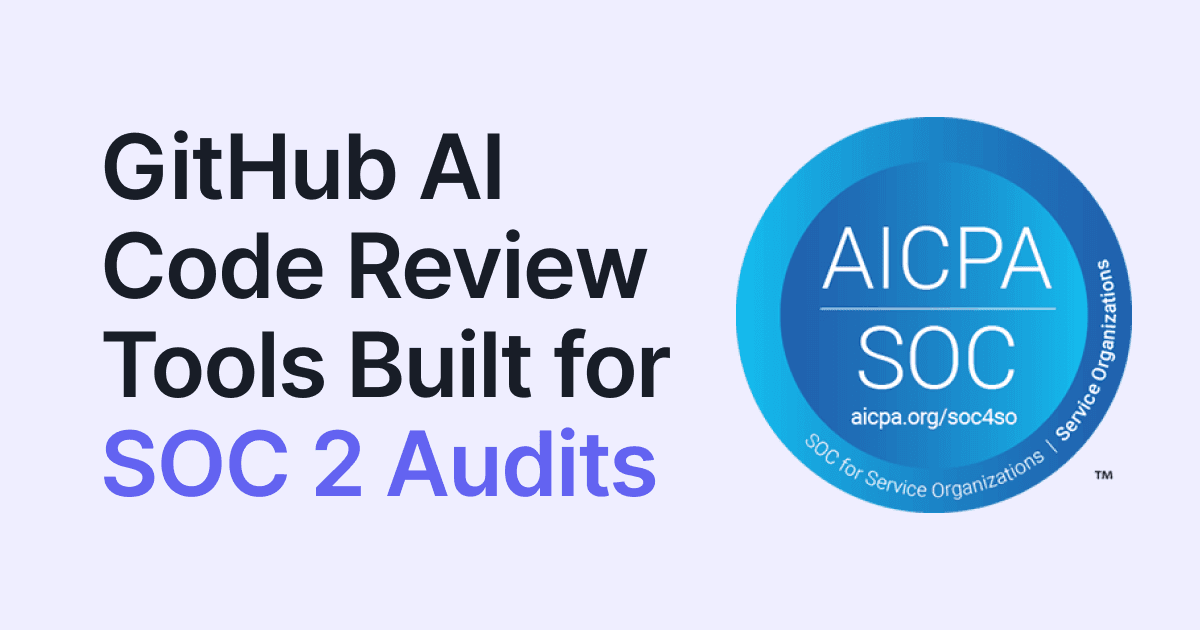AI Code Review
Sep 24, 2025
Vibe Coding Without Team Backlash: A Practical Playbook

Amartya Jha
Founder & CEO, CodeAnt AI
“Vibe coding” is the creative rush: you follow the signal, spike an idea, and get something working, fast.
In solo mode, that’s a superpower.
In a team, unchecked vibes become technical debt, flaky builds, and review fatigue.
The social penalty is real: people quietly stop picking up your PRs, the informal “shadowban.”
But the good news is that you don’t have to choose between flow and standards. High-velocity teams keep experimentation inside clear guardrails… as they communicate intent early, isolate work, leave context breadcrumbs, respect quality gates, and turn spikes into maintainable code before merge. That’s not bureaucracy; it’s what lets you move fast together. Modern orgs pair these habits with AI guardrails so the boring checks are automated while humans focus on architecture and risk.
This guide gives you a concrete, leader-friendly playbook to preserve speed and trust, plus where CodeAnt.ai slots in: real-time PR analysis for quality + security, IDE checks with one-click fixes, and a 360° performance view (DORA metrics, review depth) so you can scale the practice across 100+ dev teams. Think of it as jazz (you throw out ideas, experiment by feel, and code up features on the fly), but in tune.
What “Vibe Coding” Means in a Team Context
Vibe coding is essentially rapid, instinct-driven development. Developers use whatever means, from sketching quick prototypes to using AI assistants like GitHub Copilot, to get something working fast.
This approach has clear upsides. It can “achieve incredible velocity in prototyping” and lower the barrier to experimenting with new ideas. For a team, that means faster POCs, quick user feedback, and a more creative environment. In fact, Gartner predicts 75% of developers will use AI coding tools by 2028, signaling that rapid, idea-driven coding is becoming mainstream.
But there’s a downside: quality.
Unreviewed, ad-hoc code tends to skip tests, docs, and coding standards. Left unchecked, “rapid accumulation of technical debt, security vulnerabilities, and integration failures” becomes a ticking time bomb.
In practical terms, sloppy code will cost businesses. According to the 2022 report by the Consortium for Information & Software Quality (CISQ), the estimated value of poor-quality software at $2.41 trillion annually, with another $1.52 trillion in technical debt. In short, if your fast hacks aren’t disciplined, your colleagues will quickly lose confidence in your commits. They’ll start ignoring your PRs, the dreaded “shadowban.”
7 Ways to Vibe Code Without Getting Shadowbanned
Vibe coding fuels rapid ideas, but it shouldn’t torch trust. Use these seven tactics to channel vibe coding into clean, compliant PRs, with CodeAnt’s PR-time analysis as your always-on safety net.
1. Communicate Before You Vibe
Don’t surprise your team. Before firing up a coding spree, give everyone a heads-up. Tell a few teammates or post in your project channel: “Hey, I’m exploring a new approach to X using AI, expect a draft PR soon.” Lack of communication is a common pitfall: teams often hit “merge bombs” when changes overlap unexpectedly. By contrast, continuous collaboration and clear updates keep everyone in sync.
Announce the plan. Briefly share the goal and scope. A quick note or Slack message can avoid confusion later.
Name your branch clearly. Use a descriptive name (e.g.
feature/vibe-login-rewrite) and mark it as experimental. This signals others: “This is a prototype, handle with care.”Use tickets or docs. Create a short issue or doc for the spike. Summarize what you’ll try. This aligns expectations and provides context when you later request a review.
2. Keep Experiments in Feature Branches
Never hack directly on main. Always isolate your vibe work in a feature or “spike” branch. Make it short-lived and merge often. The best practice is to limit branch lifetime, regularly integrate back so you don’t diverge endlessly. For example, even if your code is incomplete or buggy, merge it with a feature flag or draft status, then refine it on the branch. CodeAnt.ai advises merging production-ready code but also using toggles to keep unfinished work safe.
Use draft pull requests. Most Git platforms let you open a PR in “draft” mode. This gives visibility (“I’m working on X”) without formal review. Teammates can peek at your progress or drop early comments.
Feature toggles. If you need to merge before it’s fully ready, use a feature flag so it stays disabled in production. That way you can integrate continuously without breaking anything.
Don’t pile up branches. Delete old experiment branches once merged. Keep the repo clean, too many stale branches creates conflicts and confusion.
3. Leave Clues: Comments and Docstrings
Even when you’re coding by instinct, help reviewers out by adding brief comments and docstrings. Why did you try this? What’s this hack doing? A few explanatory comments go a long way. Remember, code is for humans too. As one software-expert blog puts it, adding quality comments is “fundamental to building software that’s easy to understand and maintain”. In practice:
Comment intent. If a function or section was generated by AI or is a proof-of-concept, say so. For example:
# TODO: refactor this AI-generated data loader to improve error handling.Describe non-obvious logic. Even small docstrings or inline
// why: ...annotations can save time for anyone reading later.Minimal but meaningful. Don’t over-comment trivial code; just mark the tricky parts. Strike a balance – only write comments “when they are worthwhile and will benefit your codebase”.
This way, your teammates (and future you) aren’t left guessing the rationale behind your exploratory code.
4. Respect the Quality Gates
Even prototype code should pass your team’s basic checks. Before pushing or opening a PR, run your linters, formatters, and test suite locally. Automate what you can. Run static analysis and security scans early. It’s a best practice to scan code on every commit. NIST, for example, recommends static analysis tools to catch vulnerabilities and enforce coding standards.
Linters/formatters. Fix any obvious style or syntax warnings. This is a quick win that avoids annoying reviewers with tiny comments.
Automated tests. If there are unit or integration tests, let them run. Failing tests or build errors should be your red flags. In general, integrate automated testing into every commit if possible.
Security checks. If you have secret-scanning or dependency checks, run them too. Many teams use CI pipelines or tools (like CodeAnt.ai!) to automatically flag issues before a human review.
If your team uses an AI review assistant (like CodeAnt.ai or others), run it locally first. These tools automate the boring stuff like, style, basic bugs, even some security, so humans can focus on the architecture. In short, honor your team’s gatekeepers (linters, CI/CD) even when vibing. It keeps bad surprises out of the main branch.
You can also read our “Code Review Best Practices” to learn more about it.
5. Ask for Fast Feedback, Not Forgiveness
The mantra here is: Get eyes on it early. Instead of coding a huge feature alone and dropping a monster PR, open a draft PR or pull request as soon as you have a tangible start. Then tag a reviewer or two. Frame it clearly: “This is a spike/prototype, looking for direction, not a final merge.” This invites collaboration.
Open a PR with minimal code. For example, save just enough to see the basic flow and send it. It’s often faster to iterate on a prototype together than to ship a big change all at once. (You can say “Get feedback on code as soon as it makes sense… iterate on prototypes, not on a ‘finished’ product”.)
Ask specific questions. In your PR description, note what you want input on (performance, architecture, etc.). This focuses reviews on what matters.
Prefer smaller PRs. Commit often. Teams like SSW emphasize small, focused pull requests: “It requires a smaller block of time to review” and gives “quality feedback” more easily. Small PRs also mean less risk if changes need to be undone.
Co-create or pair. For critical decisions, pair-programming or an ad-hoc mob can resolve uncertainties quickly, avoiding long trails of comments.
In short: keep the loop tight. By collaborating early, you avoid the “surprise 1000-line PR” that nobody wants. According to GitHub research, using AI assistants like Copilot can make developers ~55% faster at tasks, so leverage those for speed, but always bounce the results with teammates as soon as possible.
6. Clean Up Before You Merge
Once your concept works and the team agrees on direction, tidy up the code. Transform your experimental script into maintainable code. This step is crucial for trust. As one engineer colorfully advises: prototype by copy-pasting, but then “clean up the code before it rots”. In practice:
Refactor. Remove duplicated code, improve naming, break large methods. Separate the actual feature from any refactor or cleanup work.
Remove debug statements. Strip out
console.logorprintfcalls and any hard-coded hacks. CodeAnt’s best-practice checklist even explicitly says to “Remove debug logs and unnecessary print statements”.Tidy the commit history. Squash or rebase so the final PR has a coherent set of commits and messages.
Update docs. If the feature needs documentation (README, API docs, UML, etc.), add or update it now.
Final tests. Run the full test suite one more time. A clean “all green” PR is a confidence booster.
By doing this, you convert a wild prototype into production-ready code. It shows reviewers respect for the project and saves headaches down the road.
7. Use AI Tools to Help
You’re already vibing with AI.. now let AI protect you. There are powerful tools designed to catch issues as you code. For example, CodeAnt.ai helps with code fixes; in controlled studies it lets developers work ~80% faster. Similarly, AI review assistants can run inside your IDE or pipeline to flag problems instantly.
CodeAnt.ai, IDE extension, continuously analyzes your code (lint, complexity, security, etc.) in the background. As you type or submit a PR, CodeAnt.ai can highlight issues and suggest one-click fixes right in your editor.

This means you can keep your creative flow, but the AI quietly enforces standards. CodeAnt’s team notes that these AI reviews handle the tedious checks so humans can “focus on the big picture stuff”. In practice, teams using tools like this see drastically faster reviews, pull requests get auto-summarized and safe to merge much quicker.
In short, embed AI where it makes sense: GitHub Copilot for drafting code, and an AI code-review tool like CodeAnt.ai for real-time feedback. You stay in “vibe mode” but with a safety net catching typos, security holes, and style violations. The result? You ship clean, high-velocity code that still passes muster.
CodeAnt.ai Powered PR Template & Spike Checklist
Vibe all you want… just make the PR effortless to review and gate it with CodeAnt.ai so code quality + security stay intact.
Copy-paste PR description
Use your VCS’s native PR template (GitHub/GitLab/Bitbucket). CodeAnt then adds AI PR summaries/comments and status checks, and can auto-generate descriptions when you want speed + consistency.
Tip: open as a Draft PR for spikes. You get visibility and early feedback without merge pressure, while CodeAnt’s PR check keeps risky diffs from slipping through.
Why this works: CodeAnt.ai analyzes code in IDE, at PR time, and in CI, catching quality + security issues, posting a human-readable PR summary, and offering one-click fixes so humans focus on architecture instead of lint noise.
CI gating note: Call CodeAnt.ai from CI (/api/analysis/start → /api/analysis/results or the CI helper). Exit non-zero on high-severity findings and mark that CI job as a required check in your repo settings. That’s how you “block merges” everywhere (GitHub/GitLab/Bitbucket)
Related links to learn more:
https://docs.codeant.ai/api-reference/analysis/start-analysis
https://docs.codeant.ai/api-reference/analysis/get-analysis-results
Spike readiness checklist (run this before you tag reviewers)
Communicate & isolate
Post intent: “Spiking X; draft PR tonight; looking for direction on Y.”
Short-lived branch (
spike/*orfeature/*). Never vibe onmain.If you must integrate early, hide behind a feature flag and keep rollbacks boring.
Signals in the PR
Fill the template fully (context/scope/risks/tests/rollback).
Call out any AI-generated code blocks.
State reviewer focus so people know where to spend time.
Quality & security gates (local first)
Lint/format clean; unit/integration tests pass locally.
Run secret, dependency, and static analysis checks. (Treat failures as blockers, not suggestions.)
CodeAnt guardrails (the safety net)
In IDE: Fix issues inline with the CodeAnt extension so your draft PR isn’t noise.
At PR time: Let CodeAnt auto-summarize the diff, highlight risky changes, and propose one-click fixes; humans focus on architecture and risk.
In CI: Run CodeAnt in your pipeline and fail the job on high-severity findings. Mark that CI job as a required check so risky vibes can’t merge.
Make it reviewable
Keep diffs small (prefer multiple draft iterations over one 1,000-line surprise).
Link the ticket and any design notes. Add before/after screenshots where helpful.
Deployment & rollback
Confirm flags/toggles and default-off behavior.
Note data migrations and rollback steps (or confirm “no migration”).
Platform quick-start (use what you have today)
GitHub: add
.github/pull_request_template.md; enable required checks; run CodeAnt.ai in your CI (mark that job required).GitLab: add a Merge Request template; protect branches; add a CodeAnt.ai CI job; make it a required status.
Bitbucket: set a default PR description file; add a pipeline step for CodeAnt.ai; make it a required build result.
Azure DevOps: use PR templates via repo policies; add CodeAnt.ai to the pipeline; block PR completion on the CodeAnt job.
You’ve standardized how spikes show up. Now prove they’re safe and worth it with a few leader-grade metrics.
Prove Your Vibes Are Safe (with…DORA Metrics + Review Depth)
Goal: show speed and control. Track a small, opinionated set so leaders can course-correct without boiling the ocean.
What to track (and why)
PR size (diff/LoC). Smaller PRs review faster and with fewer oversights; keep them bite-sized to avoid “shadowban” fatigue.
Review response time. Time to first human reply on a PR. Tight loops reduce rework and keep momentum; DORA research ties fast feedback to higher delivery performance.
CI pass rate (first-try). % of PRs green on the first run. It’s your hygiene proxy for spikes (linters/tests/security are actually running) and correlates with lower change failure.
Escaped defects / reopen rate. Bugs or incidents traced to recent merges (or PRs reopened). Trend it alongside DORA’s change failure rate to quantify the cost of undisciplined vibes.
Throughput (DORA). Deployment frequency and lead time for changes show if you sustained speed after adding guardrails. Pair with MTTR so you recover fast when experiments misfire. (2024 DORA: the four key metrics remain the industry baseline.)

You can read more in this DORA report:
https://cloud.google.com/blog/products/devops-sre/announcing-the-2024-dora-report
Target shapes (don’t hard-code numbers)
PR size: trending smaller (or stable-small).
Review response: trending down (faster first response).
CI first-pass rate: trending up; flaky failures trending down.
Change failure / escaped defects: trending down; MTTR trending down.
Throughput: steady or rising without quality regression, hallmark of DORA high performers.
How to instrument quickly
On your git platform: auto-tag PR size (labels or bots), require a draft PR for spikes, and expose CI summaries in the PR. These two tweaks alone improve review pick-up and make “too big to review” visible.
Security + quality automation: keep SAST/dependency/secret scans in the loop for AI-assisted changes; NIST’s 2024 SSDF profile explicitly recommends verified automation around GenAI-influenced code.
CodeAnt.ai Control Center (single pane):
DORA metrics out-of-the-box. CodeAnt.ai computes DORA metrics via your VCS/CI (GitHub, GitLab, Bitbucket, Azure DevOps) and shows deployment frequency, lead time, change failure rate, MTTR, alongside pipeline context, so you don’t stitch dashboards.
Developer/Review analytics. Drill into review depth, response times, PR size distribution, reopen rate, and contributor-level signals to spot bottlenecks (oversized diffs, slow reviewers, chronically failing first-pass).
PR-time guardrails. Real-time quality + security analysis on each PR (and via API/CI) keeps the first-pass green rate high before humans spend cycles. Tie the analysis to merge gates or severity thresholds.
Leader cue: Review this dashboard weekly. If PR size creeps up and time-to-first-review slows, expect change failure to rise next. Tune guardrails (tests/linters/security), nudge teams back to draft-early, small-batch habits, and let CodeAnt.ai’s PR checks keep CI green, without killing flow.
If the dashboard says “we’re fast and safe,” great…now remove the landmines that will make those lines trend the wrong way.
Anti-Patterns to Avoid (Red Flags → Fix)
Vibe coding isn’t the problem; surprise and sloppiness are. Use this quick map to kill the behaviors that get PRs silently ignored.
1) “Surprise 1,000-line PR”
Why it happens: Solo build → mega drop → reviewer fatigue.
Fix: Open a draft PR early; slice into reviewable chunks (Step 5).
CodeAnt.ai assist: PR-time summary + auto-findings highlight risky files first, so reviewers don’t drown.
2) Long-lived, hidden branches
Why it happens: “I’ll clean it up later” → drift and conflicts.
Fix: Short-lived feature branches; merge behind flags; integrate often (Step 2).
CodeAnt.ai assist: CI/PR gates keep half-baked code safe behind toggles until checks pass.
3) “AI dump” with no rationale
Why it happens: Copilot/LLM output pasted without context.
Fix: Docstrings + PR context: call out AI-generated sections, intent, and review focus (Steps 3 & 5).
CodeAnt.ai assist: Flags insecure/low-quality AI snippets and proposes one-click fixes right in the IDE/PR.
4) Green CI, still risky
Why it happens: Lint/tests pass, but security and deps weren’t scanned.
Fix: Treat quality gates as a bundle: lint + tests + SAST + secrets + dependency audit (Step 4).
CodeAnt.ai assist: Runs quality + security checks together, blocks merges on severity thresholds.
5) Draft PR that never evolves
Why it happens: “WIP forever” → reviewers stop caring.
Fix: Convert to ready for review in 24 to 48h or close; keep a living checklist (Steps 1 & 5).
CodeAnt.ai assist: PR-level nudges on stale drafts; surfaces review response times so EMs can nudge.
6) Refactor mixed with new feature
Why it happens: “While I’m here…” churn explodes the diff.
Fix: Separate refactor PR → merge → then feature PR (Step 6).
CodeAnt.ai assist: Diff heatmaps + “changed files” insights make oversized, mixed PRs obvious.
7) “Works on my machine”
Why it happens: Local drift; missing scripts.
Fix: Add repro steps in PR template; run the same checks locally as CI (Steps 4 & PR template).
CodeAnt.ai assist: IDE checks mirror CI rules so local runs match PR gate outcomes.
8) No owner, no ticket
Why it happens: Spike with unclear scope and no traceability.
Fix: Link the issue; fill Context/Scope/Risks/Test plan in the PR template (Steps 1 & PR template).
CodeAnt.ai assist: Attaches analysis to commit/PR/ticket so findings stay traceable.
Conclusion: Make Vibe Coding Your Competitive Edge
High-performing teams don’t outlaw creativity, they operationalize it. The point of this playbook wasn’t to tame vibe coding; it was to turn it into a repeatable, team-safe habit. You communicated intent before you riffed, kept spikes in short-lived branches, left context breadcrumbs, respected quality + security gates, pulled feedback forward with draft PRs, and cleaned up before merge. That’s how you protect trust, avoid the quiet PR “shadowban,” and still move at idea speed. The proof isn’t a vibe, it’s the numbers: smaller diffs, faster first reviews, higher first-pass CI, healthier DORA, fewer reopen/rollback moments.
If you lead a 100+ dev org, the next leap is making this default:
Bake it into PRs: templates, draft-first, clear reviewer focus.
Automate the guardrails: lint, tests, SAST, secrets, deps, every time.
Instrument outcomes: watch DORA and review depth like product metrics.
This is where CodeAnt.ai fits naturally…from IDE-to-PR checks for quality + security, one-click fixes that keep flow unblocked, and a leadership dashboard with DORA metrics, PR size, review latency, and contributor signals across GitHub, GitLab, Bitbucket, and Azure DevOps.
Next step: scan your very next PR with CodeAnt.ai, turn on PR-time gates, and baseline your metrics. Keep the vibes, upgrade the system.













